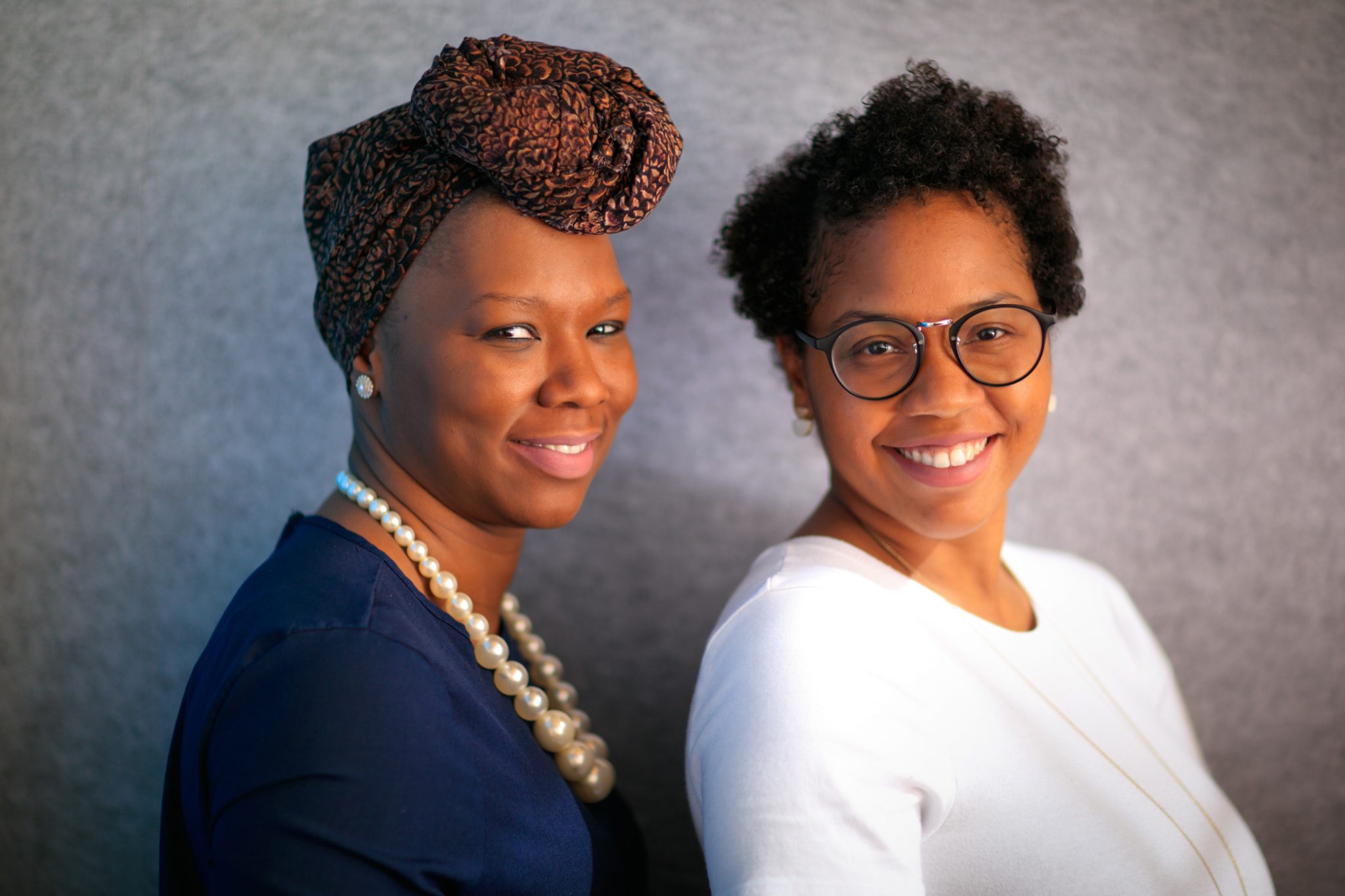Our schools have not been able to integrate new insights on learning science and child development and have been difficult to change over time resulting in an education system that increasingly does not serve the needs of our workforce, our communities, or our children. Decades of efforts to improve existing schools with little success have yielded important insights about what must be true to enable transformation: schools must be redesigned from the ground up, and that process must include students and families. Under the leadership of Dr. Sharonica Hardin-Bartley, and with support from The Opportunity Trust, the School District of University City is working to Reimagine Learning by creating the conditions for school leaders to work alongside the community to innovate new schools for the future.
Co-principals Deitra Colquitt and Jessica Hawkins are leading a community-oriented school redesign effort at Pershing Elementary in University City. “We are trying to dismantle systems that do not uplift Black and Brown children,” says Colquitt. “We can dream differently for students outside of the traditional school model.”
In 2019, Colquitt and Hawkins, then Teacher Instructional Leaders at Pershing Elementary, were researching how to achieve their vision for the school. Their search for resources and community to help them innovate new ways to serve Pershing students led them to join The Opportunity Trust’s Catalyst Fellowship. That year-long exploration into school innovation helped them to clarify their vision for what Pershing Elementary should and could be.
Innovating New Approaches
The Catalyst Fellowship connected Colquitt and Hawkins with educators from a wide range of backgrounds, including traditional public school, charter schools, and nonprofits. Colquitt and Hawkins were inspired by the intentional design that goes into launching new schools and organizations. They realized they could adapt the same design principles and processes to rethink what was possible in their 100-year-old community school. “The Catalyst Fellowship aligned us with other people who had ambitions and dreams similar to ours around what school could look like,” says Colquitt.
In January 2020, the district announced Colquitt and Hawkins would be Pershing’s next co-leaders. Now in the position to make significant changes to Pershing, the pair centered their design around the community, developing a design team of community stakeholders, including parents and students, tasked with developing a vision and core set of values to guide their school into the future.
Partnering through the Pandemic
Colquitt and Hawkins were met with new challenges when they took over as school leaders of Pershing during the COVID-19 pandemic. They completed the Catalyst Fellowship with the funding and support to take their community design team on school visits across the country, but the limitation on group gatherings and travel caused Colquitt and Hawkins to reassess their original vision.
“We’re learning as we go,” says Hawkins. “No one has done a full school redesign during a pandemic.” Colquitt and Hawkins say that the Catalyst community has continued to play an essential role in supporting their school redesign work because they still connect with their cohort to share ideas, resources, and thought partnership. They were granted funding through Catalyst to engage stakeholders in a series of virtual community-building experiences to grow their commitment to a lead school built on a foundation of racial equity.
In the fall, Colquitt and Hawkins continued to build on the foundation of their Catalyst efforts by joining the Accelerate program, a self-directed fellowship designed for regional education leaders. Both have taken this as an opportunity to explore different leadership and growth paths that will ultimately help strengthen their work as a team.
Creating a Community Vision
Community visioning is still at the forefront of their efforts despite increased challenges. This school year, different teams have been piloting different learning approaches to gather information and feedback on what works and impacts student achievement. The pilots have included project-based learning, outdoor learning experiences that spark inquiry while also meeting the needs of the school’s youngest learners, and 4th and 5th grades engaged in pilots of acclaimed Engage NY and EL Education Language Arts curriculums.
Colquitt and Hawkins have also been leading focus groups and empathy interviews with families, staff, and students to answer why school exists and build towards a shared vision by the end of the school year. “Our mission and vision will anchor us. From there, we will look at our systems through the lens of what we want our school to be and chart a path forward,” says Colquitt.
